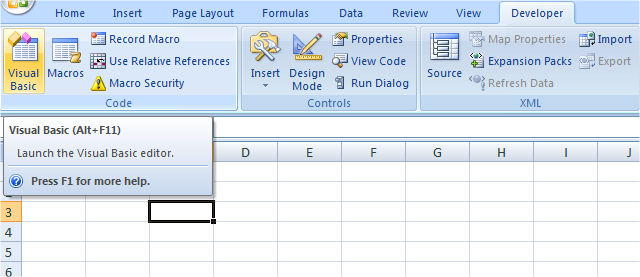


Some other special tools appear according to the selected items. When the commands are hidden, you can still access them, by just clicking on the tab name.įigure 1.4: The Ribbon when Ctrl+F1 is pressed If you don’t like to see this wide-spread toolbars all the time, you can (un)hide them any time using Ctrl+F1 (or double click on any tab name). Notice that some of the descriptive text is gone, but the icons remain. Figure 1.3 shows the Ribbon when Excel’s window is made narrower. Tab of the Ribbon with all controls fully visible. Figure 1.2 shows the Homeįigure 1.3: The Ribbon when Excel’s window is made narrower When the window is too narrow to display everything, the commands adapt and may seem to be missing. The appearance of the commands on the ribbon varies, depending on the width of Excel window. Because menus and toolbars are no longer available in Excel, these customizations appear in the Add-Ins tab. Place a check mark next to Developer Tab.Īdd-Ins: This tab is visible only if you’ve loaded a workbook or add-in that customizes the menu or toolbars. To display the Developer tab, open Excel options from Office button and then select ‘Customize Ribbon’. It contains commands that are useful for programmers. Some commands on this tab are also available in the status bar.ĭeveloper: This tab isn’t visible by default. View: The View tab contains commands that control various aspects of how a sheet is viewed.


 0 kommentar(er)
0 kommentar(er)
